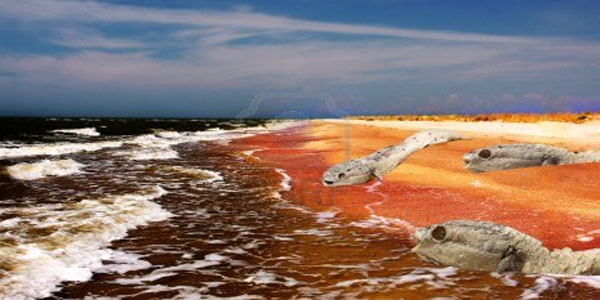According to the study published in the Proceedings of the National Academy of Sciences, life at the sea floor 145 miles out from the California coast has been analyzed for a total of 24 years now. There, the researchers measure the amount of 'sea snot' on the ocean floor. Sea snot is the highly technical term they use to describe dead sea life including fish, plankton, feces, and other organic oceanic matter. As mentioned, this snot covers about 1% of the floor, but now it seems to be covering about 98% of it.
"In the 24 years of this study, the past two years have been the biggest amounts of this detritus by far," said marine biologist Christine Huffard, who works at the research station off of California. Multiple other stations throughout the Pacific have seen similarly alarming increases.Throughout the study and the National Geographic coverage of it, climate change is blamed. Never mind the fact that the astronomical increase in sea snot occurred in conjunction with the Fukushima nuclear disaster - they don't even bother to mention that.
The Fukushima Daiichi nuclear disaster occurred when an earthquake and subsequent tsunami hit the area on March 11, 2011. To this day, the amount of damage is unclear as the Japanese government along with TEPCO (the power company that owns the nuclear power plant) seem to be content to hide the truth.
Measurements taken in March 2012 show sea snot levels to be at about 1%. Just a few months later, they had grown to 98%.
After 24 years of measuring the dead sea life and recognizing that global warming is a slow-moving and ongoing effect, the scientists would have us believe the "explosion" of sea snot that occurred in just a few months' time was a normal effect of climate change. Yeah, right.
The sheer fact that the effects of Fukushima were not even considered make the study and its findings all the more suspicious. One would think if climate change could dramatically change the volume of sea snot in a few short months, it would have had other similarly troubling effects on other aspects of the environment during the same period - effects we would notice. But it didn't. Fukushima did.
Source: Proceedings of the National Academy of Sciences




"The sheer fact that the effects of Fukushima were not even considered make the study and its findings all the more suspicious"
suspicious......are you kidding me right now??